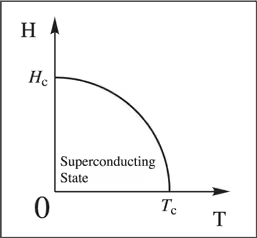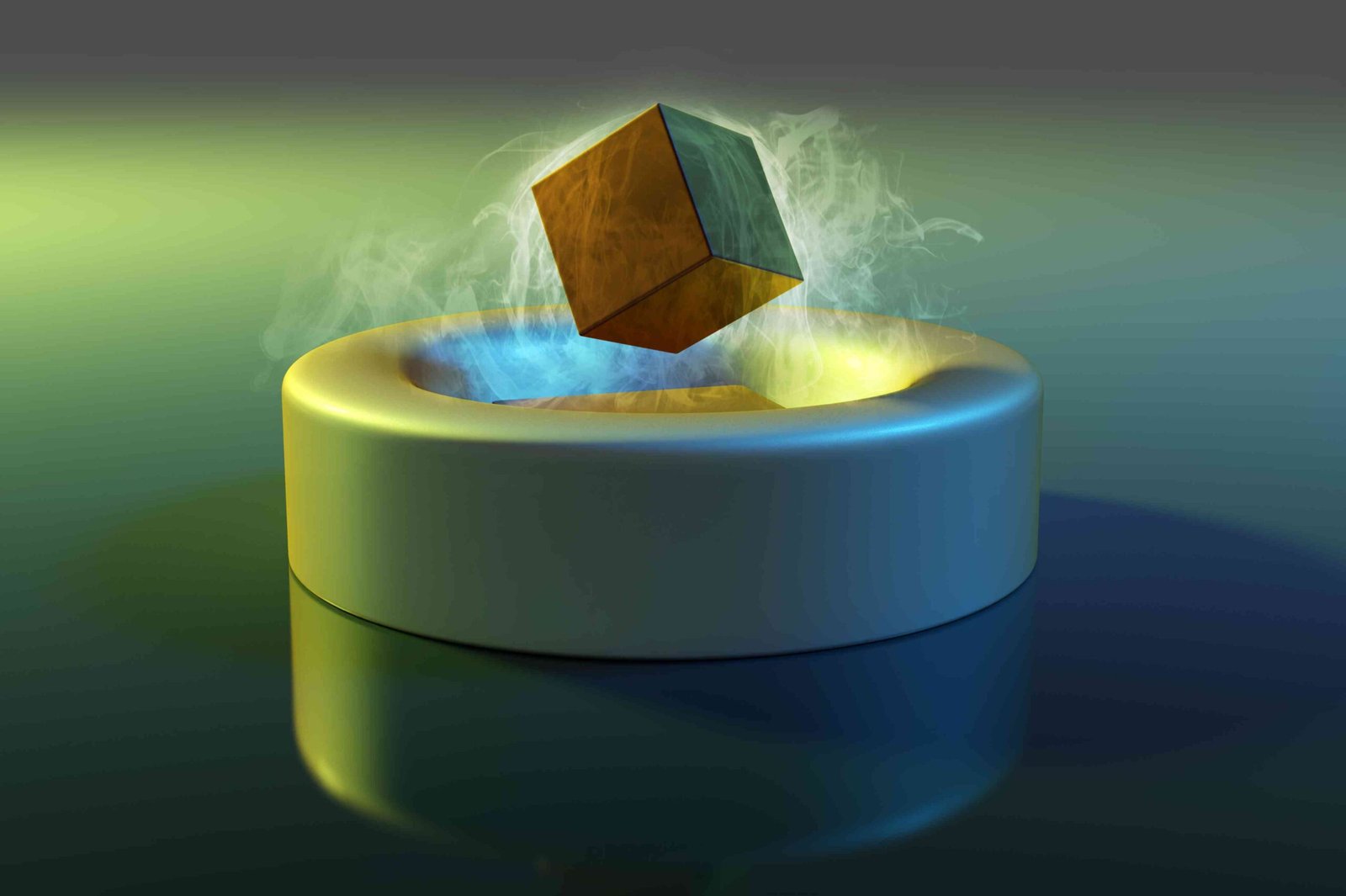In realm of physics and materials technology few phenomena seize creativeness quite like superconductivity. These remarkable substances capable of accomplishing strength with 0 resistance have been situation of excessive studies and improvement for over century. From powering maximum superior scientific imaging technology to propelling trains at amazing speeds superconductors are quietly revolutionizing numerous fields of technology and clinical research.
This article delves deep into arena of superconductors exploring their fundamental properties modern packages & thrilling opportunities they hold for our destiny. Whether you are curious pupil era enthusiast or truly person intrigued by using contemporary science be part of us on this journey to apprehend how superconductors are shaping arena round us.
At its middle superconductor is cloth.. that could behavior electricity with clearly no resistance. This manner.. that electric powered modern can float via superconductor indefinitely with out dropping any strength as warmness. To fully recognize significance of this property it is vital to recognize.. that every one traditional conductors such as copper wires inevitably lose few power as heat when electric modern day passes thru them.
Superconductors show off this remarkable behavior best underneath precise situations usually at very low temperatures. When those conditions are met fabric undergoes phase transition into its superconducting nation dramatically changing its electric and magnetic homes.
Table of Contents
History of Superconductivity
The story of superconductivity starts offevolved in 1911 with Dutch physicist Heike Kamerlingh Onnes. While reading electrical homes of mercury at extraordinarily low temperatures Onnes observed.. that metals electrical resistance all at once dropped to 0 at about 4.2 Kelvin ( 268.95°C). This surprising discovery marked delivery of superconductivity as subject of have look at.
For many years following Onnes discovery superconductivity was located in diverse different materials however usually at temperatures near absolute zero. search for materials.. that would superconduct at higher temperatures became first rate recognition of studies leading to big breakthroughs in Eighties with invention of high temperature superconductors.
Types of Superconductors
Superconductors are broadly labeled into two types: Type I and Type II.
Type I Superconductors:
- These are commonly pure metals like mercury lead & aluminum.
- They showcase ideal diamagnetism (whole expulsion of magnetic fields) under their essential temperature.
- They have single properly described critical magnetic field.
Type II Superconductors:
- These include steel alloys and complicated oxide ceramics.
- They can hold superconductivity within presence of more potent magnetic fields.
- They have critical magnetic discipline values bearing in mind combined nation wherein magnetic flux can partly penetrate fabric.
Type II superconductors specifically excessive temperature superconductors are of notable interest for sensible packages due to their capability to function at better temperatures and magnetic fields.

Physics Behind Superconductivity
Understanding physics of superconductivity requires delving into number of most captivating factors of quantum mechanics and materials technological know how. Lets explore key phenomena.. that outline superconductivity.
Zero Electrical Resistance
The hallmark of superconductivity is whole absence of electrical resistance. In ordinary conductors electrons collide with vibrating atoms of fabric as they drift losing electricity inside technique. This electricity loss manifests as warmness which is why electrical wires heat up whilst current flows through them.
In superconductor but electrons enter quantum kingdom wherein they can float with none collisions or strength loss. This frictionless go with flow of electrons is what permits superconductors to carry electric powered modern day indefinitely without any strength loss.
Meissner Effect
Another defining function of superconductors is Meissner impact named after physicists Walther Meissner and Robert Ochsenfeld. This effect describes expulsion of magnetic fields from interior of superconductor when it transitions into superconducting country.
When superconductor is placed in weak outside magnetic subject it generates floor currents.. that create magnetic discipline exactly opposing outside area. This reasons magnetic discipline to be expelled from superconductors indoors. As result superconductors are perfect diamagnets meaning theyre repelled by magnetic fields.
The Meissner effect is what enables well known levitation demonstrations where magnet floats above superconductor showcasing interplay between superconductivity and magnetism.
Cooper Pairs and BCS Theory
The microscopic cause of superconductivity got here in 1957 with Bardeen Cooper Schrieffer (BCS) concept evolved by John Bardeen Leon Cooper & John Robert Schrieffer. This concept explains superconductivity in terms of Cooper pairs.
In superconductor electrons with contrary spins and momenta form certain pairs called Cooper pairs. These pairs behave like bosons and can occupy same quantum state forming coherent country.. that moves thru cloth without scattering. This collective conduct of Cooper pairs is what offers upward thrust to zero electric resistance.
The BCS theory efficiently defined behavior of traditional superconductors. However invention of high temperature superconductors in Nineteen Eighties has brought about new theoretical demanding situations as these substances do not completely comply with BCS version.
Properties and Characteristics
Superconductors own several particular properties.. that set them other than regular conductors. Understanding those residences is crucial for each theoretical know how and sensible applications.

Critical Temperature
The crucial temperature (Tc) is temperature underneath which cloth becomes superconducting. For conventional superconductors this temperature is commonly very low regularly only some Kelvin above absolute zero. For example:
- Mercury: 4.2 K ( 268.95°C)
- Lead: 7.2 K ( 265.95°C)
- Niobium: 9.3 K ( 263.85°C)
The discovery of excessive temperature superconductors within Nineteen Eighties dramatically multiplied crucial temperatures:
- YBa2Cu3O7 (YBCO): ninety three K ( one hundred eighty.15°C)
- Bi2Sr2Ca2Cu3O10 (BSCCO): hundred and ten K ( 163.15°C)
The search for room temperature superconductors stays an active vicinity of studies with latest claims of materials superconducting at temperatures as high as 15°C (288 K) underneath excessive strain conditions.
Critical Magnetic Field
Superconductors maintain their superconducting country only up to certain strength of carried out magnetic area referred to as essential magnetic subject (Hc). Beyond this area energy material transitions back to its regular non superconducting country.

Type I superconductors have single important discipline above which superconductivity is absolutely destroyed. Type II superconductors on other hand have two crucial fields:
- Lower vital area (Hc1): Below this area material reveals entire magnetic field expulsion (Meissner effect).
- Upper critical field (Hc2): Between Hc1 and Hc2 material enters combined kingdom where magnetic flux can in part penetrate. Above Hc2 superconductivity is destroyed.
The capacity of Type II superconductors to maintain superconductivity in higher magnetic fields makes them in particular beneficial for programs like effective electromagnets utilized in MRI machines and particle accelerators.
Critical Current Density
The vital present day density (Jc) is maximum cutting edge superconductor can deliver in line with unit pass sectional area even as maintaining zero resistance. Above this cutting edge density cloth transitions lower back to its ordinary nation.
High important modern day densities are critical for practical applications of superconductors specifically in strength transmission and excessive field magnets. Modern high temperature superconductors can obtain critical modern day densities of tens of millions of amperes in line with rectangular centimeter underneath positive conditions.
Understanding and enhancing those vital parameters temperature magnetic area & modern density is prime to increasing realistic programs of superconductors.
Applications
The precise residences of superconductors have led to their adoption in diverse fields from scientific imaging to particle physics. Lets discover number of most widespread programs of superconductors.
Medical Imaging (MRI)
One of most famous programs of superconductors is in Magnetic Resonance Imaging (MRI) machines. MRI calls for powerful solid magnetic fields to supply targeted snap shots of human body. Superconducting magnets commonly crafted from niobium titanium (NbTi) alloys can generate those robust magnetic fields (generally 1.5 to 3 Tesla) with out eating huge quantities of energy.
The superconducting coils in an MRI system are cooled to approximately four K using liquid helium. Once energized those coils can keep solid magnetic discipline indefinitely without additional strength input way to their zero resistance. This allows for superb steady imaging.. that has revolutionized clinical diagnostics.
Particle Accelerators
Superconductors play crucial position in particle physics studies in particular in particle accelerators just like Large Hadron Collider (LHC) at CERN. These machines use effective superconducting magnets to guide and attention beams of debris as they may be increased to nearly speed of mild.
The LHC uses over 1200 superconducting dipole magnets every 15 meters long made from niobium titanium. These magnets perform at 1.9 K and generate magnetic fields of up to 8.Three Tesla. Without superconductors achieving such strong magnetic fields over such massive scales might be practically impossible because of energy consumption and warmth technology.
Also read: Neuromorphic Computing: Revolutionizing AI with Brain Inspired Technology 2024
Magnetic levitation (Maglev) trains use effective superconducting magnets to reap frictionless travel at excessive speeds. These trains waft above their tracks eliminating wheel friction and bearing in mind smoother faster & more power efficient transportation.
The Japanese SCMaglev (Superconducting Maglev) machine uses niobium titanium alloy superconducting magnets cooled with liquid helium. These magnets create sturdy magnetic field.. that interacts with coils inside guideway to levitate and propel teach. In 2015 Japanese SCMaglev train set global pace document of 603 km/h (375 mph).
Electrical Power Transmission

Superconductors provide potential for lossless transmission of electrical strength over long distances. While now not yet extensively applied superconducting electricity traces may want to notably lessen strength losses in electrical grid.
Projects like AmpaCity in Essen Germany have demonstrated feasibility of superconducting power transmission in city environments. AmpaCity project uses 1 kilometer superconducting cable made from BSCCO (Bismuth Strontium Calcium Copper Oxide) to update conventional 110 kV line showcasing capacity for greater green and compact energy distribution systems.
These applications constitute only fraction of potential makes use of for superconductors. As research maintains and new materials are observed we can expect to look superconductors playing an more and more essential function in numerous technological fields.
Current Research and Developments
The field of superconductivity continues to be hotbed of scientific studies and technological innovation. Lets explore number of maximum exciting regions of cutting edge research and recent tendencies.
High Temperature Superconductors
The discovery of excessive temperature superconductors (HTS) within 1980s marked sizable milestone in area. These substances usually copper oxide based ceramics can superconduct at an awful lot better temperatures than traditional superconductors.
Recent studies has focused on know how mechanism in back of excessive temperature superconductivity which isnt always completely explained by way of BCS principle. Scientists are exploring function of factors including charge density waves spin fluctuations & electron correlations in these substances.
One thrilling development is discovery of iron based superconductors in 2008. These substances offer brand new platform for studying high temperature superconductivity and feature capacity blessings in phrases of manufacturability and magnetic discipline tolerance.
Room Temperature Superconductivity
The holy grail of superconductivity research is reaching superconductivity at room temperature and ambient strain. Such discovery could revolutionize many technological fields from power transmission to computing.
In latest years there had been numerous exciting developments in this location:
- In 2020 researchers said superconductivity in carbonaceous sulfur hydride gadget at temperatures as high as 15°C (288 K) albeit under excessive pressures of about 267 GPa.
- In 2023 group claimed to have carried out room temperature superconductivity in cloth referred to as LK 99 at ambient strain. However these claims are still beneath extreme scrutiny and verification by scientific network.
While those consequences are promising significant challenges stay in verifying those claims and growing practical room temperature superconductors which could operate beneath regular situations.
Quantum Computing Applications
Superconductors are playing vital position in improvement of quantum computer systems. Many leading quantum computing architectures including superconducting qubits and topological qubits rely on superconducting materials.
Superconducting qubits made from substances like aluminum or niobium leverage quantum properties of superconducting circuits to keep and manipulate quantum facts. Companies like IBM Google & Rigetti are actively developing quantum processors primarily based in this era.
Another exciting place is look for topological superconductors which could doubtlessly host Majorana fermions. These uncommon debris could serve as basis for topological quantum computers which promise to be more strong in opposition to environmental noise and mistakes.
